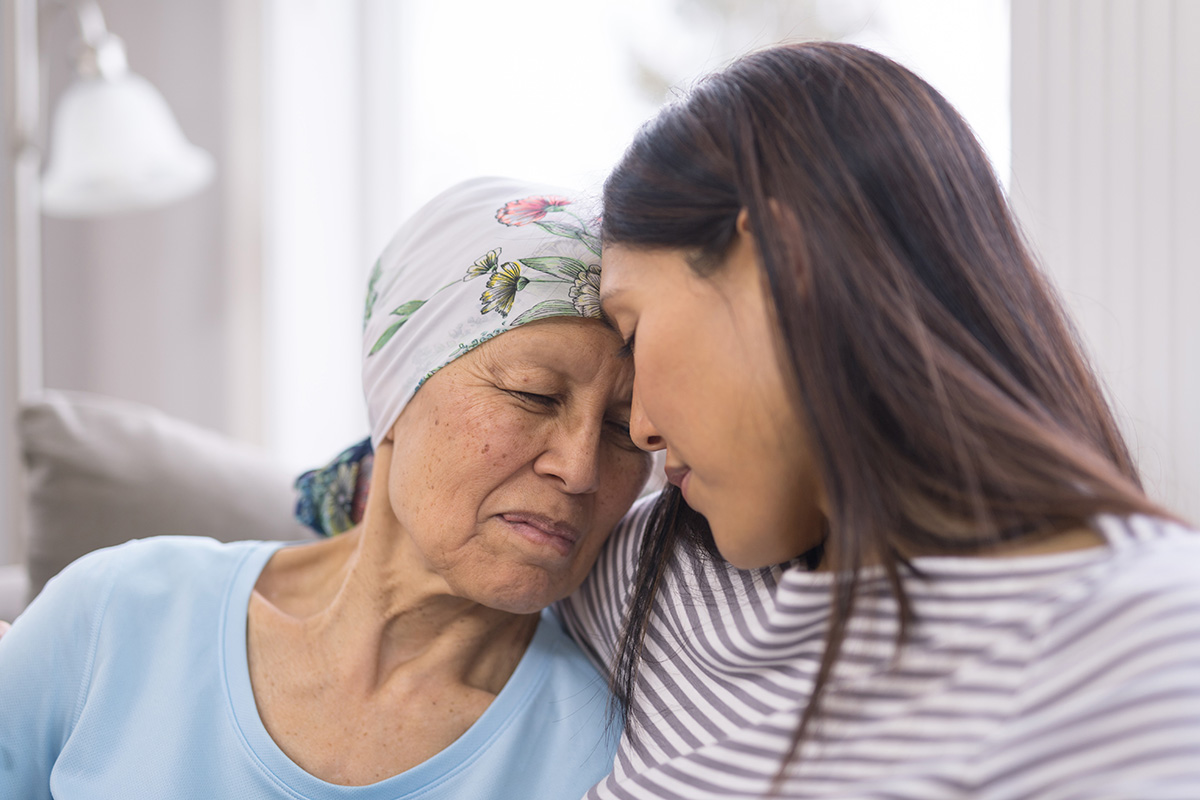Teachers College’s Douglas Mennin, Professor of Psychology & Education, is the co-recipient of a five-year, $3.9 million grant from the National Institutes of Health to conduct a study of ERT-C, a therapy he has developed to treat severe and persistent anxiety and depression in the spouses, parents, adult children and others who take care of cancer patients.
These informal caregivers (ICs), who play an increasingly crucial role in the health care system, are at even higher risk for these conditions than the cancer patients they attend.
“If successful, ERT-C holds significant promise to not only improve the quality of life of ICs across the caregiving trajectory, but also yield downstream benefits to the patients for whom they provide care,” says Mennin, who is Co-Principal Investigator in the study with Allison Applebaum, Assistant Attending Psychologist and Director of the Caregivers Clinic at the Department of Psychiatry and Behavioral Sciences at Memorial Sloan-Kettering Cancer Center (MSKCC) in New York City.

RESEARCH AND TREATMENT TC‘s Douglas Mennin and Allison Applebaum of Memorial Sloan-Kettering Cancer Center are Co-Principal Investigators of the new study. (Photos: TC Archives & MSK Cancer Center)
The study, which will be conducted at MSKCC and Massachusetts General Hospital, will compare ERT-C to cognitive behavioral therapy (CBT), the current standard therapy, in 200 participants. CBT has not worked as well for ICs as it does in the general population, perhaps because it doesn’t target issues such as the “attentional rigidity” and pervasive negative thinking that often afflict people who care for cancer patients.
ERT-C is a variant of Emotional Regulation Therapy (ERT), which Mennin has developed and refined over the past two decades to help people who are chronically stressed and worry or ruminate a lot. He has previously shown that ERT improves depression and anxiety in the general population. He has also found that the therapy correlates with changes in brain regions concerned with salience (what draws attention and gets noticed) and decision-making, including the insula and the medial prefrontal cortex, located in the cerebral cortex — and that those changes predict better mental health outcomes.
If successful, ERT-C holds significant promise to not only improve the quality of life of ICs across the caregiving trajectory, but also yield downstream benefits to the patients for whom they provide care.
—Douglas Mennin, Professor of Psychology & Education
In smaller, pilot open and randomized control trials, Mennin has shown that cancer patients whose caregivers are treated with ERT-C experience improvement in anxiety, depression, burden due to caregiving, and quality of their own lives.
In the new study, patients will be randomized to either ERT-C or CBT, and will be monitored for improvement in their symptoms and other quality-of-life measures through three and six month follow-ups. Those receiving ERT-C will receive eight sessions of the treatment via telehealth video hookup. (Due to COVID, MSKCC does not currently allow family members to visit cancer patients, who typically are immune-compromised.)
The study will also assess whether ERT-C improves inflammation connected to the gastric and cardiac activation that occurs during worry and whether it lowers the stress hormone cortisol.
Mennin is also currently conducting another trial in which he has adapted ERT to treat COVID-related anxiety and depression in patients, caregivers and the general population.
[Read a story about Mennin’s trial of ERT for COVID-related anxiety and depression.]
The sessions offered to participants in the study who receive ERT-C will focus on three strategies for self-care.
We teach you to attend to your emotional state, and to understand what is motivating you -- the need for safety and self-protection, the need for reward, or both. We all experience being simultaneously pulled in both directions.
—Douglas Mennin, Professor of Psychology & Education
“First, we teach you to attend to your emotional state, and to understand what is motivating you — the need for safety and self-protection, the need for reward, or both. We all experience being simultaneously pulled in both directions,” says Mennin. “In cancer, we see informal caregivers who are so focused on the threat of loss that they won’t go out for dinner or a movie or engage in an activity they love, such as gardening.”
In one exercise, the treatment asks participants to image a scene with conflicting imagery — for example, a beautiful meadow and stream with a dead, rotting tree in it.
“Their initial impulse is often to focus on just the beautiful part of the scene, or else just on the tree,” Mennin says. “We try to get them to hold both pieces in their minds, because when you push one piece out, the brain has a way of reminding you. It might keep sending you rotting trees. And when you suppress one set of feelings, it tends to play out in behaviors — say, drinking too much, or going out without a mask.”
Other exercises in the treatment focus on giving participants perspective on their own thoughts and perhaps even on visualizing their thoughts as animated characters.
“The idea is that you’re noticing parts of your mind so that you can manipulate them,” Mennin says. “For example, by introducing a more compassionate voice instead of beating yourself up.”
